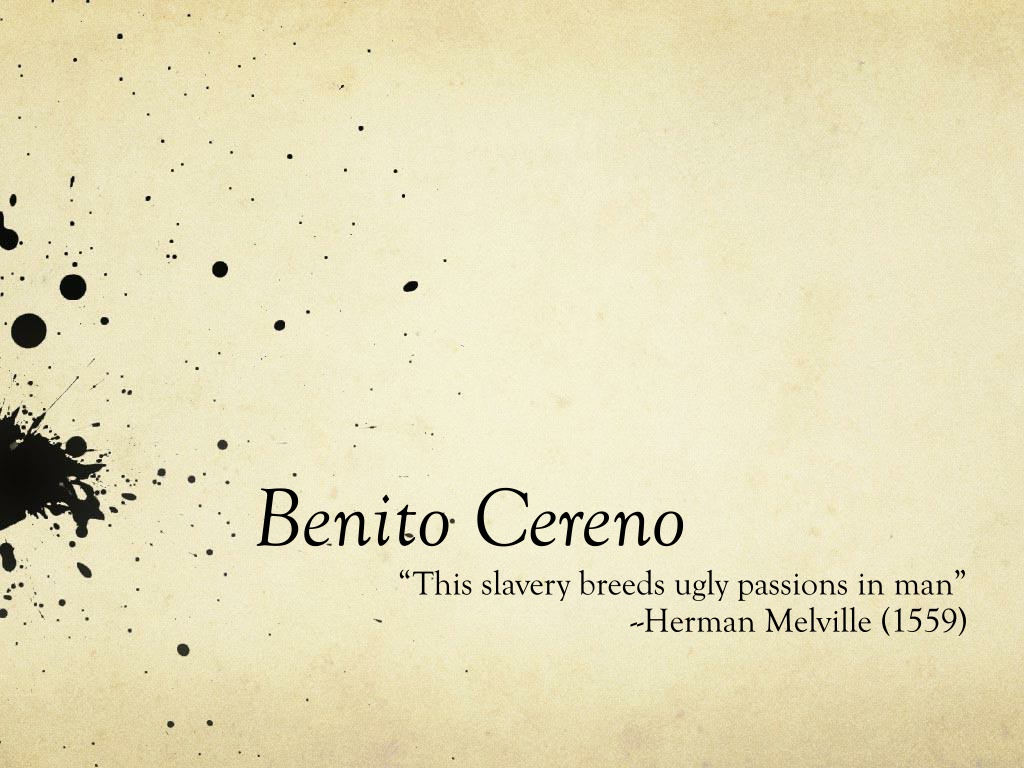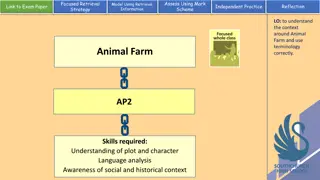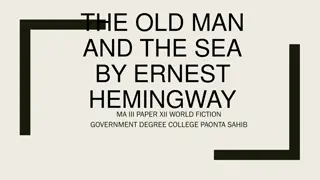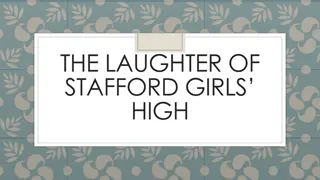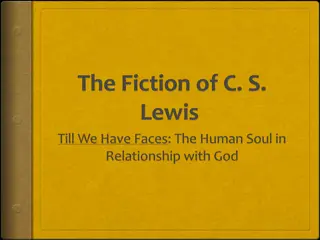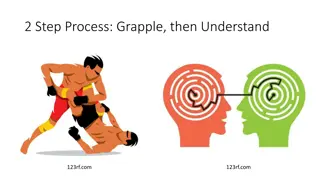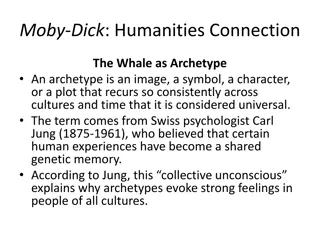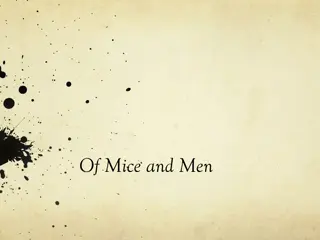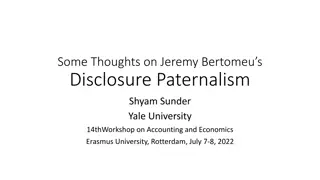Exploring Allegory and Paternalism in 'Benito Cereno' by Herman Melville
"Delve into the complex themes of slavery, paternalism, and allegory in Herman Melville's 'Benito Cereno'. This analysis discusses the hidden world Captain Delano encounters, the comparisons between different worlds, and the refusal to see signs of violence, reflecting on America's historical context of dependence and control. Uncover the layers of meaning behind Melville's narrative."
Download Presentation

Please find below an Image/Link to download the presentation.
The content on the website is provided AS IS for your information and personal use only. It may not be sold, licensed, or shared on other websites without obtaining consent from the author. Download presentation by click this link. If you encounter any issues during the download, it is possible that the publisher has removed the file from their server.
E N D
Presentation Transcript
Benito Cereno This slavery breeds ugly passions in man --Herman Melville (1559)
The Actual Mutiny A real Amasa Delano re-took a mutinous slave ship, the Tryal, off Santa Maria Island, Chile in 1805. Melville used the events of Delano s account, but changed the character of Delano greatly Delano s real ship was Perseverance The real Delano tried to claim salvage rights to the whole ship & contents Neither na ve nor selfless
Allegory for American Slavery? Ship named for the Island of San Dominik another name for Hispaniola, or Santo Domingo or Haiti (1528) Location of the first European colony in the new world The place Bartolome de las Casas described in Devastation of the Indies Second revolution in the new world 1791, after the 13 American colonies Haiti s (Santo Domingo's) slave rebellion killed or drove out nearly all whites in Haiti Haiti s example was the unspeakable, repressed nightmare of the American South Nat Turner s rebellion (1831) More than 250 uprisings or attempted uprisings involving ten or more slaves in N. America between 1650-1865.
The Idea on Trial: Slaverys Paternalism Southerners invent the paternalistic myth of slavery A way to put fears of rebellion to rest and justify the institution Whites cast themselves benevolent care- takers (like fathers) of a race of people who were by nature very simple and preferred to take direction from their superiors. Enslaved Africans were supposedly grateful & devoted since they were so loved and taken care of. Whites pretended organized action and violence was impossible for such dumb, docile and dog-like servants. Even Jefferson was taken in
But Is Benito Cereno Allegorical? Must be a sustained comparison action in the story = action on the idea The American Captain Delano steps into a different, hidden world where the captain is a law unto himself (1529, 1532) Steps into slavery Goes on an on about the happy innocent negroes (1547, 1556 top 2, PP) Constant comparisons in Benito with crumbling images of Europe, a corrupt version of class privilege (1527, 1548 ruined summer house) South liked to imagine its peculiar institution as an improvement on a genteel aristocratic tradition, like Europe or ancient Greece Delano refuses to see the signs of violence (hatchets 1529, gauntlet 1536, black stabs white 1536, questions about $ and defenses 1541, shaving 1557) like America refuses to see? Delano & America must presume whites are in control Truth: whites are dependent on blacks for survival
More Allegorical Connections Delano must uphold the laws of the sea and assist Cereno (thereby thwarting a slave rebellion) Probably reflected Melville s frustration with his father-in-law, Lemuel Shaw who was a supreme court justice in Massachusetts and upheld fugitive slave laws. Shaw presided in trials in 1842 & 1851. Declaring the Fugitive Slave Law constitutional, he forced escaped slaves to return to slavery Delano s men, hoping for a share in the cargo, suppress the slave revolt, killing many in spite of a financial motive to keep them alive. This is slavery s ethical bottom line: only hope of profit limits violence against slaves
The End of the Narrative How does the escape of Benito into the arms of the genial American fit the Allegory? What does Delano assume at first? (1567) Babo trying to kill Benito is what tears away the veil (1568) If we refuse see the real violence in slavery, what will be the result? It will erupt suddenly like a sooty avalanche (1567) What must we realize about the Africans on board? Strategic, purposeful Consummate actors, especially the little Babo Intent on self-governance Assume that as their right Dispense their own harsh revolutionary justice on board Opposite of all paternalistic assumptions Douglass said that any slave who kills his master should be considered a hero, like the heroes of our own revolution Can that slave hero speak from an authentic self in this text?
Maybe Its Just Symbolic Maybe about colonialism or racism more generally Haiti is also a powerful symbol of the cruelties of conquest/colonialism Babo wants to go to a place where blacks don t have to be slaves to whites Rejection of rule by others, not just slavery Delano interprets everyone in terms of ethnic stereotypes, including Benito and that s his failure Maybe about the difficulty of seeing the difference between good and evil Is anyone unstained by violence on the San Dominick? Is Delano s innocence really Good, since it nearly killed Benito? Symbols in landscape support this interpretation all grey, no boundaries Or American practical know-how versus European patronage and inherited status Democracy vs. Aristocracy Benito Cereno didn t earn his captaincy and that s why he can t command Delano knows the job so inspires confidence & succeeds Isn t this shown to be Delano s own misinterpretation? Delano s belief in his own mastery nearly cost his ship
Why did abolitionists ignore Benito Cereno? Melville challenged them too much in two ways: Showing that one might like Africans and still be blinded by racism Racism isn t just about overt hate (lynch mobs, beatings, etc.) The pretense of benevolence may be as bad as direct violence because it is both blinding and enabling A paternalistic racist like Cap. Delano can t see how insulting and degrading his assumptions about blacks are. Because the violence of slavery is invisible to him, he approves & facilitates the status quo (works to return the slave ship to control of its master) 1. Showing a potential in Africans that most Abolitionists couldn t handle or assimilate to the propaganda refuses sentiment The sentimental image of the helpless, slightly docile victim was promoted except by a few former slaves like Douglass. Uncle Tom s Cabin helped the cause greatly. Most readers don t like any of the blacks in Benito 2.
Or is Melville frightened of what lies ahead if (when) slaves are free? If it s a critique of slavery, it s pretty oblique, considering the violence perpetrated by both whites and blacks Doesn t paint either side as uniformly good or bad That frustrates some readers Why can t the story let Babo speak, claim his heroism? Wasn t allowed to testify in a white court Why speak if none really hear? Do you think the story is a critique of slavery? Compare to Douglass
